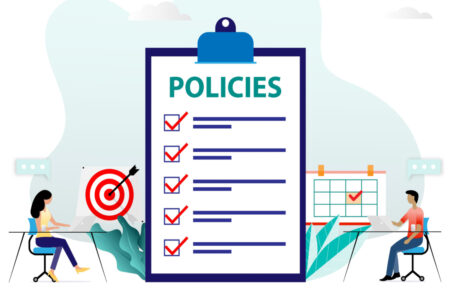How HR Leaders Can Overcome Roadblocks to Employee Engagement
Keeping employees informed and engaged is a top priority for HR teams, but it’s not an easy task. Learn how to overcome 4 common employee engagement challenges.


For most HR organizations, employee engagement is seen as a top priority, yet worldwide, 87 percent of employees are still not engaged, according to Gallup’s State of the Global Workplace Report. With continued growth and profitability at stake, it is not surprising that 51 percent of HR executives say improving the employee experience is a top priority for 2019.
If you’re ready to act, we’ve identified four top roadblocks to employee engagement and created a list of practical changes HR leaders can initiate – starting today.
Roadblock #1: Employees aren’t participating.
Many issues could be at play here. Employees may feel that management doesn’t listen to them, or they are not rewarded for speaking up. Perhaps they feel undervalued or overworked. They may feel there are repercussions to speaking freely, or that nothing will really change.
Solution: Encourage employee feedback.
According to Salesforce research, employees who feel their voices are heard at work are 4.6 times more likely to perform their best work. To create a positive culture of trust and communication, invite feedback in multiple ways and assure employees that their answers are anonymous and that their feedback is encouraged.
Here are some ideas:
- Pulse surveys: Keep the survey short, focused on one or two issues, and act on the results. Start with these 5 simple questions.
- Make leaders more accessible. Leadership blogs and town halls give senior leadership the opportunity to interact and connect with employees.
- Stand-up and review meetings: According to PwC, nearly 50 percent of employees prefer face-to-face feedback. During stand-up meetings, stay on topic, encourage feedback, and keep it short. During review meetings, provide constructive feedback, recognize progress, and encourage a two-way conversation.
- Keep employees informed: Adding a newsfeed keeps employees up to date, while a social hub encourages teams to share personal stories.
Roadblock #2: Remote workers and virtual teams don’t feel connected.
Today’s digital workplace means employees are often physically separate. A recent survey by Igloo found that a majority of remote workers feel they are missing out on important information or are excluded from meetings. New hires may feel this even more strongly, according to Gallup.
Solution: Make it easy to collaborate.
- Create a team room: Boost collaboration and communication with this team space for sharing ideas, managing projects, and staying up to date.
- Invest in team-building activities: Organize a team gift exchange or give teams the opportunity to volunteer together for a common cause.
- Video and web conferencing: Remote teams can easily meet, talk, and share their screens in real-time, saving your company time and money in travel.
- Chat and instant messaging: Facilitate quick discussions and project updates.
Virtual team-building efforts often fail. Find out three reasons why.
Roadblock #3: Employees don’t feel appreciated.
According to a recent survey, 72 percent of employees ranked recognition as having the greatest impact on engagement. A recent Gallup poll found that employees who feel adequately recognized are half as likely as those who don’t to say they’re going to resign in the coming year.
Solution: Make recognition a top priority.
- Recognize and reward: Publicly congratulate deserving employees on the company newsfeed or in front of colleagues. Attach it to a simple reward such as time off or a gift certificate.
- Build a culture of praise: Employees want to be recognized by their managers, but also by their peers. Create a central area where employees can recognize each other for a job well done.
- Add a personal touch: Show employees they matter by celebrating birthdays and special milestones.
Roadblock #4: Employees are leaving.
A recent survey of over 800 HR professionals found boosting retention is a top challenge. Social connections, opportunities for growth, and concern for employees can make the difference between loyalty and leaving.
Solution: Give employees a sense of purpose, well-being, and belonging.
- Promote work-life balance: 51 percent of employees in a Gallup survey said they would change jobs for one that allowed them to adjust their work hours to create better work-life balance.
- Develop personal growth plans: 86 percent of millennials say that career training and development would keep them at their current job.
- Onboard new employees: Offer mentoring, training, courses, and coaching to boost loyalty and retention.
- Show empathy: Establish a flexible, supportive work environment. It will pay off in improved business outcomes and happier employees.
Learn how to drive engagement at every stage of the employee lifecycle. Read: Employee Journey Maps: Designing the Perfect Employee Experience.
4 extra roadblocks to conquer
Not only have HR leaders been tasked with improving employee engagement, they must do so in a timely, cost-effective way. Here are four roadblocks (at an organizational level) that often stand in the way of HR employee engagement initiatives:
- Senior management buy-in: It’s critical to get business leaders on board before implementing new strategies. Lack of alignment can quickly derail any HR engagement initiative.
- Limited funding: A cost-cutting mentality can hamper HR employee engagement efforts, yet Gallup research shows that companies with engaged employees outperform those without by 202 percent.
- Competing HR priorities: A survey by G&A Partners found that more than 70 percent of HR time is spent on administrative or operational tasks. Automating HR tasks can achieve a more people-focused HR department.
- Technology: Gartner reports that 67 percent of business leaders believe their organizations must become significantly digitalized by 2020 to remain competitive. Lagging behind is no longer an option. Technology can solve HR challenges by streamlining and simplifying everyone’s job – thus boosting employee engagement.
The time to act is now
Why not pick a roadblock and take an action to overcome it? Everyone in the company stands to benefit from a engaged, productive team that drives increased efficiencies, productivity and growth.
Indeed, the most successful organizations make employee engagement central to their business strategy. You can operationalize these strategies quickly and cost effectively with the help of a digital workplace platform that offers customer-tested solutions out of the box.
Learn more about how Igloo can help drive employee engagement in the digital workplace.







